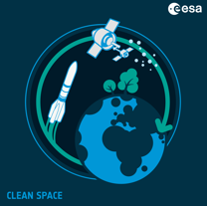On Monday 20 June at 14:30 CEST, join the ESA Clean Space team live to learn about the implementation of the Agency’s Zero Debris Approach.

The number of space objects is increasing exponentially and will continue to do so, with more satellites to be launched in the next three years than in the past six decades. Despite internationally recognised space debris mitigation guidelines, technical standards, and national space regulations, the actual number of missions successfully performing End-of-Life operations is still lower than the target (90% of the total, according to ISO 24113 standard).
This calls for an improvement in the End-of-Life management of missions taking place in valuable Earth orbits. To ensure ESA leads by example on the topic of space sustainability, Director General Josef Aschbacher is proposing a Zero Debris Approach for ESA missions, to be implemented by 2030. The Zero Debris Approach entails a more sustainable strategy for space operations and End of Life, boosting the disposal success rate from the protected regions and encouraging removal actions in case of failed disposal. European large system integrators are also setting Management of End-of-Life as one of the main drivers for the evolution of their platforms.
Over the years, the CleanSat initiative has developed technologies to prevent debris creation by means of:
-
Passivating a satellite at the end of its life
-
Deorbiting the spacecraft to re-enter in less than 25 years (for low-Earth orbits)
-
Reducing on-ground casualty risk in case of re-entry (e.g. by increasing the demisability of the technologies on board)
-
Ensuring the reliability of End-of-Life technologies and operations
The next step is now to integrate these and other innovative technologies at system level, in a Zero Debris Platform. The evolution of European Spacecraft platforms would be based on five goals:
With this webinar, ESA intends to align with interested European stakeholders, industry – integrators and equipment suppliers – and users – both institutional and commercial – to discuss the Zero Debris Approach and define the scope of the Zero Debris Platform’s evolution activities that are being prepared for the CM22 proposal.
The draft agenda for this webinar is the following:
|
14:30 |
Introduction by ESA Director General, Josef Aschbacher |
|
14:40 |
Introduction by Head of Space Safety Programme, Holger Krag |
|
14:50 |
Introduction by Director of Earth Observation Programmes, Simonetta Cheli |
|
15:00 |
Technical presentation and interactive session |
|
16:15 |
Conclusions and Q&A |
|
16:30 |
End of Webinar |
HOW TO REGISTER
The Clean Space team would like to invite European Space stakeholders with an interest in contributing to the Zero Debris Approach to join this webinar. The event is open to entities from ESA Member States, Cooperating States and Associate States.
You can register until Friday 17 June 2022 through the tab "Registration" of this webpage.
Participants will receive confirmation and connection details prior the event.
RELATED CONTENT
-
Recordings or slides of previous Clean Space webinars, such as "CleanSat: a new approach to space debris mitigation", "How to assess the reliability of disposal or decide to extend the life of a satellites", "Design for Demise", "On orbit servicing is the horizon", are available at the following link: https://blogs.esa.int/cleanspace/clean-space-webinars/
-
An overview of Design for Removal technologies is available at the following link: https://blogs.esa.int/cleanspace/2021/05/04/catch-it-if-you-can-how-to-help-catching-a-satellite/


